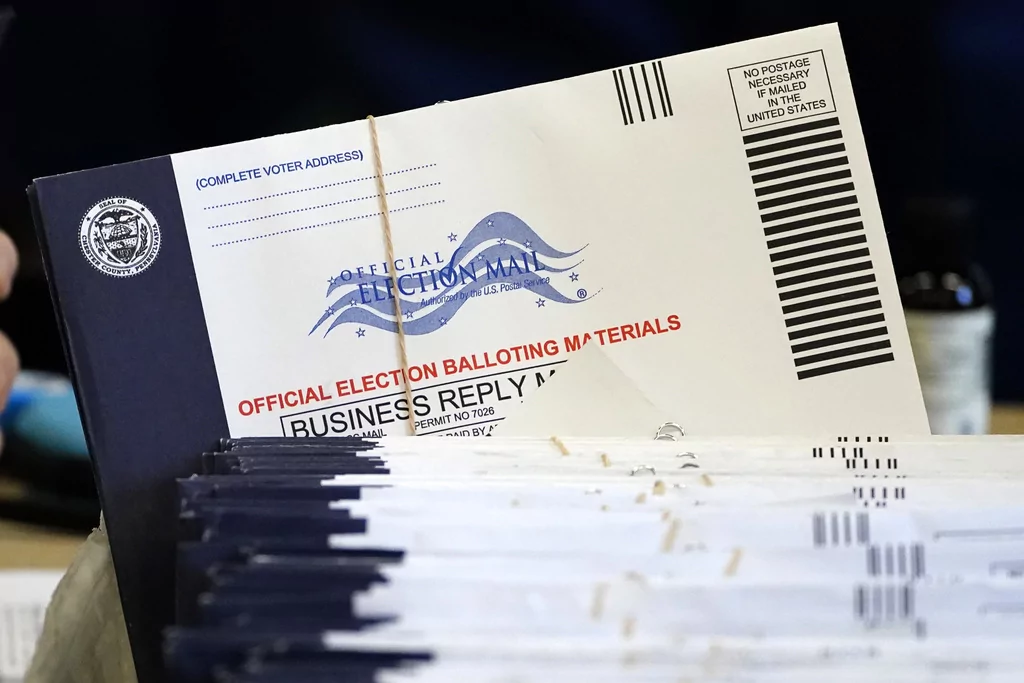

Voting in the 2024 election begins this week as several states begin sending out ballots, with a few facing problems with third-party candidates that are slowing down the process.
With less than 50 days until the Nov. 5 election, voters in select states will have the chance to cast their ballots either in person, absentee, or through the mail beginning this week. Early voting, a staple of the 2020 election, allowed over 100 million voters to cast their ballots before Election Day.
With mail-in voting, voters can request a ballot to be sent to them or, in some states, receive them automatically. Absentee ballots and mail-in ballots, once different, are now relatively the same process, though 14 states still require voters to provide an excuse for why they are casting an absentee ballot.
In states like North Carolina and Pennsylvania, ballots are delayed due to third-party challenges to access the ballot. Alabama began the cycle by mailing ballots to its absentee voters on Sept. 11. The state, as well as Mississippi and New Hampshire, does not offer early in-person voting.
Wisconsin
Wisconsin will start sending out ballots on Sept. 19 to those who requested them. Former presidential candidate Robert F. Kennedy Jr. filed an appeal to remove himself from ballots after a district court rejected his attempt to do so.
Kennedy dropped out on Aug. 23 and endorsed former President Donald Trump, who is running a competitive and narrow race against Vice President Kamala Harris. The rulings in Wisconsin, along with those in other battleground states, could make a significant difference between who wins the White House come November.
North Carolina
North Carolina was supposed to send out ballots to voters on Sept. 6 but on that day, the state Court of Appeals granted Kennedy’s request to halt the ballots with his name on them from being sent out.
Counties had printed more than 2.9 million absentee and in-person ballots before the Sept. 6 court order, allowing Alabama to be the first state to send out mailed ballots. Now ballots requested by over 13,600 military and overseas voters will be sent out on Sept. 20. Absentee ballots to other requestees will follow starting on Sept. 24, allowing counties to ensure vendors can print the amended ballots and ensure packets are ready for voters.
The ballot reprinting costs fall to the counties, per a release from the North Carolina State Board of Elections. The release said the cost would vary from a few thousand dollars in smaller counties to $300,000 in Wake County, North Carolina’s largest by population.
Early in-person voting starts statewide Oct. 17, and the deadline to request absentee ballots is Oct. 29.
Minnesota
Both early in-person and mailing voting starts in Minnesota on Sept. 20, with the deadline to register to vote on Oct. 15. Absentee ballots can be requested at any time except on Election Day on Nov. 5.
Several changes to voting in Minnesota took effect recently, including that voters can return an absentee ballot in person until 8 p.m. on Election Day. Previously, the deadline was 3 p.m. If they’d like, registered voters can request to be added to a permanent absentee voter list, so they don’t have to reapply each year.
If voter registration is currently active, voters will not need to bring ID to the polls. If a voter has not cast a ballot in more than four years, proof of residency will be required, such as a valid Minnesota driver’s license or a photo ID plus a document with a voter’s current name and address.
South Dakota
Absentee voting begins on Sept. 20 in South Dakota. Early in-person voting is not offered in the state, but voters can cast an absentee ballot at the county auditor’s office from Sept. 20 to Nov. 4.
Voters must show an approved photo ID, such as a driver’s license or a tribal ID to vote at the polls. According to a 2023 law, the state prohibits the use of ballot drop boxes, one of several methods that Republicans have criticized in the past as possible hotbeds for voter fraud.
South Dakota also does not permit same-day voter registration. Voters must register by mail or in person by Oct. 21.
Virginia
Early in-person voting will be available to Virginians beginning Sept. 20 and last until Nov. 2. Voters must present an acceptable ID or sign an ID confirmation statement at the ballot box.
If a voter receives an absentee ballot but chooses to vote in person, that voter must bring it to the ballot boxes and surrender it in person. Same-day registration is available between Oct. 16 and Nov. 2.
Vermont
Early voting in Vermont begins on Sept. 21, with all registered voters allowed to vote absentee for any reason. Both in-person and absentee will begin on Saturday. Voters are also not required to show ID when they arrive at the polls unless a photocopy of an acceptable form of identification was not shown when a voter registered by mail or online.
Vermont redistricting in 2022 altered the boundaries of state legislative districts, so polling places for certain voters may have been altered.
Sept. 21 is also the federal deadline that all absentee ballots must be sent to overseas or military voters. Eleven states will have sent out mail-in ballots by this day.
Pennsylvania
Several outlets reported that Pennsylvania would send out ballots beginning on Monday; however, the ballots are now delayed due to ongoing court cases related to third-party candidates’ access to the ballot.
There are four cases involving three slates of presidential and vice presidential candidates, and Kennedy is not one of them. All four cases are awaiting rulings from the Pennsylvania Supreme Court, and ballots will not be printed until the decisions are brought down and a list of candidates is certified by the secretary of the commonwealth.
CLICK HERE TO READ MORE FROM THE WASHINGTON EXAMINER
“This process may still take several weeks after a certified list of candidates is available before ballots appear in voters’ mailboxes, and thus counties urge the courts to resolve the remaining objections as quickly as possible to help counties meet their goal of administering a smooth, fair and accurate election,” John Buffone, spokesman for the County Commissioners Association of Pennsylvania, said in a statement via Vote Beat.
On Sept. 16, Pennsylvania counties must start processing applications from voters requesting a mail ballot.





